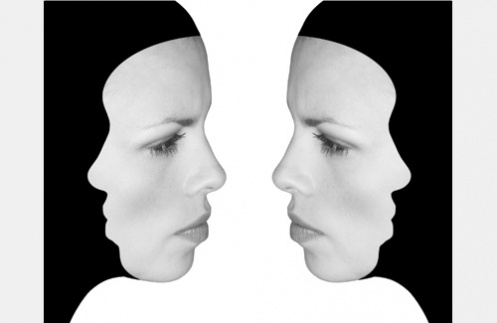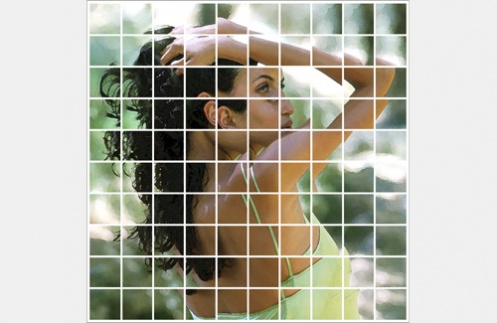

Image 1 - This image started life as a straightforward profile of a Czech model taken in on a beach! The image was cropped to obtain a single image of the model's profile, and the background was removed before it was saved as a black-and-white image. The precise shape of the profile was then captured, flipped horizontally and used to mask out the hair, ear and neck - indeed the remainder of the image. The masked area was then completely blacked out. Having spent some time tidying up various imperfect elements of the new masked image, a second layer was created and flipped horizontally. The two layers were then merged using a layer mask to paint in the reversed image on a larger canvas.
The two halves of the image are therefore identical although one half is obviously reversed. The two faces were placed at a distance from each other that seemed to give a pleasing result and which created an interesting white shape, rather like a piece on a chess board, at the centre of the final image. I entitled the image "Profiling Ambiguity" because the various ways in which it can be perceived seem to provide a sort of profile for ambiguity itself. Anyway, I understood what I meant! One customer now has an A3-sized print of this image hanging on his studio wall and reports that he sees something different every time he rests his eyes upon it!
Image 2 - This original picture from which this image is created was taken on Fuji Provia 100 in a wood in southern Crete. The girl is a professional model from Bulgaria booked by a friend who lives in Paris! Her make-up and hair were prepared by a professional French make-up artist.
The 35mm slide was taken using a vertical format, and the bottom third was cropped. The square image was then adjusted with the curves control and processed using a watercolour filter to give a painterly effect. The de-registered mosaic was created by progressively moving a standard square selection around the image taking copies of slightly overlapping pre-planned areas. The copied selections were then pasted into precise locations in a new image to build up this improperly-registered view. The most difficult part of the process was choosing the degree to which adjacent squares should be out of register. For instance, in the areas of the model's hair, poor registration goes almost unnoticed. However, in the areas that include the face and the strap of the dress the misalignment is very noticeable. Too little misalignment destroys the effect of the mosaic, but too much movement can render parts of the figure grotesque. Ultimately it was just a matter of trial and error.








